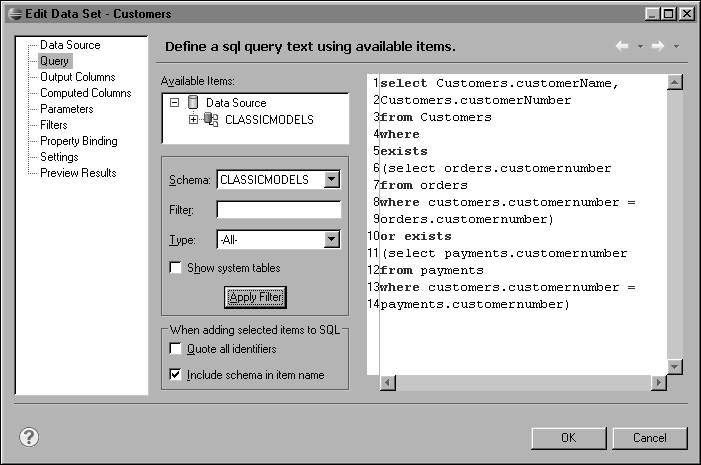The database contains customers that do not have orders or payments. The query for the customers report returns all customers. When you run the report, there are customer rows that show only the column headings for the Orders and Payments tables, as shown in
Figure 13‑25.

You can exclude customers that do not have orders or payments by changing the query for the customers report.
(SELECT Orders.customerNumber
WHERE Customers.customerNumber =
(SELECT Payments.customerNumber
WHERE Customers.customerNumber =

